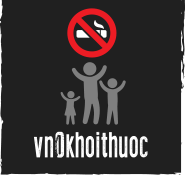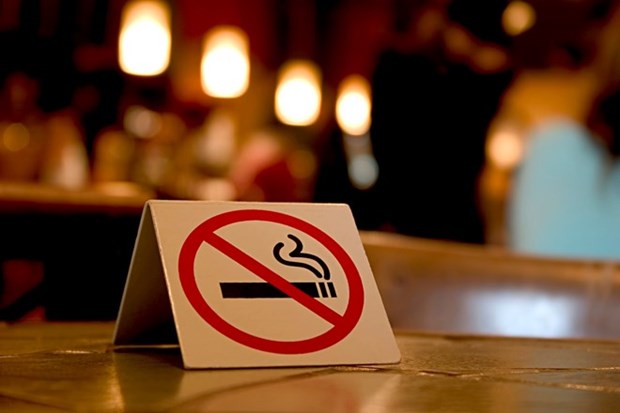Smoking, nowadays, is a habit of many people in many places, from countryside to city. N.P.Th (35 years old), living in Hung Yen, said that he has been smoking for a long time, so he chooses the T.L tobacco brand. In one or two days, he spends only 10.000 VND on 1 pack of 20 cigarettes.
Because of the fact that the tobacco price is low (500 VND per cigarette), many people, from city to countryside, adolescents to low-income people, old people, can easily buy this products.
Not only Th., many young people said that they start smoking because of the cigarettes price. Many of them recognize smoking as a habit helping to relieve stress with low costs.
15.6 million Vietnamese people over 15 years old are smoking
At present, Vietnam is one of the countries with the lowest tobacco price. Most retail stores all over Vietnam are selling tobacco.
Anyone can spend less than 10.000 VND on a pack of 20 cigarettes, consuming in 1 or 2 days.
Assoc. Prof.Dr. Luong Ngoc Khue – Head of Medical Examination and Treatment Department (Ministry of Health) said that in recent years, we had many difficulties in tobacco harm prevention. One of the main reasons why the smoking rate is still high and slowly reduces is the low tobacco prices. He gave an particular example that one cheapest pack of cigarettes in Vietnam is 6.000 VND to below 20.000 VND.
Doctor Nguyen Tuan Lam – an expert in tobacco harm and non-communicable diseases prevention (WHO office in Vietnam) added that the tobacco price in Vietnam (average 10.000 to 20.000 VND per pack) is so low compared with other countries. In fact, the low tax and retail price leading to the popularity of smoking is the main reason of the high smoking rate in Vietnam.
He said that children in the U.S do not have enough money to buy a pack of cigarettes because it cost from 7 to 8 USD per pack. Or in France, you can see that people usually share cigarettes with each other because ít may cost tens of dollars.
In Vietnam, according to the recent smoking research on adults, the smoking rate in male is 45% and female 1.1%. On average, there is one smoker out of two males. Vietnam ranks the third place in smoking rate in the ASEAN with 15.6 million smokers at the age of over 15 years old. In addition, 28.5 million non-smokers have to be exposed to smoke at home, 5.9 million people at working places.
Smoking may create a heavy health and economic burden in Vietnam. As stated in the statistics provided by the MOH, smoking annually cause 40.000 deaths per year in Vietnam. This figure will reach 70.000 in 2030 if Vietnam cannot carry out immediate and effective measures to prevent tobacco harms.
Economic loss caused by smoking is estimated 24.000 billion VND per year, including the cost of treatment, the loss of work due to sickness and the loss of early deaths caused by smoking in Vietnam.
Vietnam is in the group with low tobacco tax
Vietnam is in the group with low tobacco tax, compared with other countries in the region and all over the world. Under the current tax law, the excise tax on cigarettes is equal to 70% of the ex-works price.
Dr.Kidong Park, WHO Representative in Viet Nam, analyzes, however, using international standards, the tax rate in the retail price (including VAT) is 35.6% of retail price. This rate is much lower than the world average (56%) and lower than the majority of ASEAN countries (53-70%).
So, Vietnam is in the group with low tobacco tax, compared with other countries in the region and all over the world.
In terms of tobacco consumption in Vietnam, as stated in the report from Vietnam Fund for tobacco harm prevention (MOH), because the proportion of income increase is higher than the proportion of tobacco price increase, the tobacco consumption has dramatically increased in recent years. From 2005 to 2016, nominal nominal income has increased by
4.7 times while tobacco prices have increased only 2.2 times. Particularly, when raising taxes to increase tobacco prices by 10%, consumption will drop by about 4% in developed countries and 5% in developing countries, especially, 10% in the group of young people and the poor. High tobacco price also assists to prevent children from starting smoking. Studies in the U.S show that the smoking rate among 12th-grade students has fallen relative to the increase in tobacco prices over the years.
Recommend strong “motivations”
Currently, raising tobacco taxes is one of the key measures in the National Tobacco Control Strategy by 2020 approved by the Prime Minister to reduce the smoking rate in male to 39% by 2020.
The National Tobacco Control Strategy by 2020 approved by the Prime Minister includes the goal of reducing the smoking rate in adult men to 39% by 2020. The Global adult tobacco survey (GATS) estimates that the smoking rate in adult men in Viet Nam is 45%. Thus, to achieve the national target, by 2020, the smoking rate should decrease by 6.3% compared to 2015.
Current tax increase plan in the draft Law amending and supplementing some articles of the Law on Value Added Tax, Law on Special Consumption Tax, Law on Corporate Income Tax, Proposed Personal Income Tax Law recommend applying the special consumption tax, in addition to the current tax rate, added the absolute tax rate 1.000 VND / pack of 20 cigarettes, 15.000 VND / cigar cigarette from January 1st 2020.
According to the statistics from WHO economists, with the plan to raise taxes as above, by 2020 the male smoking rate will reduce 1.5% compared to the current rate of 45.3% (estimated from the 2015 GATS survey).
Thus, with the current government proposal to raise taxes, even though the number of smokers has decreased, it has moderately reduced (1.5%) and far below the required level of reduction of 6,3% to achieve the National Tobacco Control Strategy by 2020.
To analyze the relationship between tobacco tax increase and the national target for smoking cessation, the WHO experts on tobacco economics estimates that to achieve the goals of the National Strategy Tobacco taxation, tobacco tax should be high enough to reduce the smoking rate by 3% by 2020.
To achieve the above targets, cigarette tax needs to increase by 2.000 VND/pack.
Particularly, from January 1st 2020, in addition to the current tariff, the absolute tax rate of cigarettes is 2.000 VND/pack. Under this roadmap, the government tax revenue is expected to increase 6,300 billion VND per year. More importantly, the number of smokers will decrease nearly 600,000 and 300,000 premature deaths will be avoided in the future.
According to experts, the current tax and prices of tobacco in Vietnam is very low, so Vietnam should consider a higher tax rate. “We recommend the optimal tax rate applied in Vietnam should be increasing the excise tax by 5.000 VND / pack. Specifically, from January 1st 2020, besides the current rate schedule, the absolute tax rate for cigarettes is 5.000 VND / pack”, said Dr.Kidong Park.
With this tax, the smoking rate will fall by 6.5 percent, which will help 1.8 million people drop out and thereby help 900,000 people avoid premature deaths in the future. This also will help to increase the tax revenue of the Government by 10.700 billion VND.
According to the WHO, to reduce the need for tobacco use, the excise tax on tobacco products should be between 60% and 80% of the retail price of cigarettes. Low cigarettes make cheap cigarettes. According to calculations, the average price of a pack of 20 cigarettes tends to decrease (12.700 VND / pack in 2010 and 11.819 VND / pack in 2015 after correcting inflation). Low-priced cigarettes increase the access to cigarettes by teenagers and the poor, reducing the effectiveness of smoking prevention.
Therefore, according to experts, raising the tax rate for tobacco is reasonable, because the price of cigarettes in Vietnam is low./.
The Resolution No. 20 issued on October 25th 2017 of the Sixth Plenum of the Central Committee of the 12th Congress on “Strengthening the protection, care and improvement of the public health in the new situation” clearly show: “Increasing excise taxes on unhealthy goods such as alcoholic drinks, carbonated drinks and cigarettes to limit consumption.”

